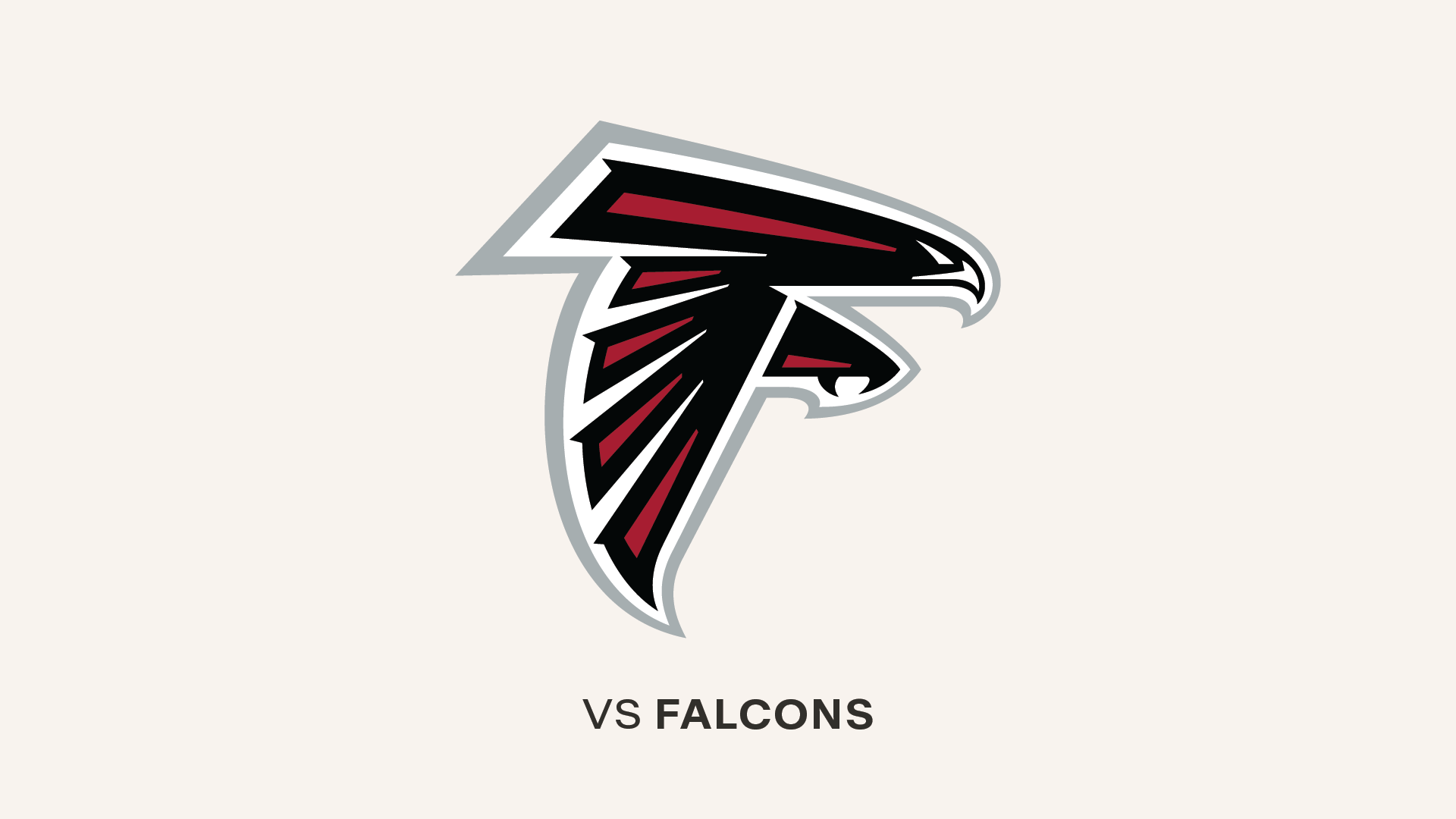A look back at all of the match-ups between the Buccaneers and the Panthers.
































Statistics can help illuminate the game of football…or they can take us down a misleading path. As Tampa Bay Buccaneers Head Coach Lovie Smith said: "I believe in stats, but it's [which] stats."
Smith, for instance, doesn't pay much attention to the NFL's defensive rankings, since they are based on yards, which he considers a meaningless measure. When he shares defensive stats with his team, he focuses on points allowed, takeaways, scoring on defense and red zone proficiency.
Here on Buccaneers.com, we unabashedly love stats, but we also understand the need to wield them wisely. Sometimes, we can get a better feel for why the team is performing as it is by going a little deeper into the numbers. Other times, we simply want to point out a few numbers we consider interesting, and hope you will find it interesting as well.
That's our goal with Football Geekery. Each week, we're going to give you a sampling of statistical and/or historical analysis, hopefully in a way that is relevant to the Buccaneers' current state of affairs. This week, we note that Charles Sims is doing more per scrimmage touch than any running back in the league, and potentially more than any other back in Buccaneer history. We also look at another exclusive club of which linebacker Lavonte David is a part, and note that Tampa Bay's offense has improved more this season than at any other point in the last four decades. Let's get started.
1. Sims Making the Most of His Touches
As we noted on Monday, running back Charles Sims could become the first player in franchise history to average at least five yards per carry and 10 yards per catch for an entire season, with at least 25 of each. He is currently the only player in the NFL with that distinction.
When you put those two categories together, Sims is doing more with his touches than any other running back in the league this year. All the backs below are on pace to hit the minimum of 100 total touches by the end of the season
Most Yards Per Touch, NFL RBs, 2015
|
Player, Team |
Rush |
Yds. |
Rec. |
Yds. |
Touch |
Yds. |
Yds./Tch |
|
Charles Sims, TB |
103 |
514 |
42 |
487 |
145 |
1001 |
6.90 |
|
Theo Riddick, DET |
41 |
129 |
76 |
668 |
117 |
797 |
6.81 |
|
David Johnson, AZ |
114 |
556 |
33 |
423 |
147 |
979 |
6.66 |
|
Danny Woodhead, SD |
93 |
325 |
72 |
704 |
165 |
1029 |
6.24 |
|
Karlos Williams, BUF |
87 |
493 |
8 |
93 |
95 |
586 |
6.19 |
If Sims can finish the season strong at Carolina on Sunday, he might end up with the franchise single-season record for yards per touch by a running back. His mark through 15 games is just barely behind the standard set by Michael Pittman in 2005, and Sims looks like a lock to be the first running back in team annals to record over 1,000 yards from scrimmage while averaging more than six yards per touch.
|
Player |
Year |
Rush |
Yds. |
Rec. |
Yds. |
Touch |
Yds. |
Yds./Tch |
|
Michael Pittman |
2005 |
70 |
436 |
36 |
300 |
106 |
736 |
6.94 |
|
Charles Sims |
2015 |
103 |
514 |
42 |
487 |
145 |
1001 |
6.90 |
|
James Wilder |
1982 |
83 |
324 |
53 |
466 |
136 |
790 |
5.81 |
|
Mike Alstott |
1996 |
96 |
377 |
65 |
557 |
161 |
934 |
5.80 |
|
Bobby Rainey |
2014 |
94 |
406 |
33 |
315 |
127 |
721 |
5.68 |
|
James Wilder |
1981 |
107 |
370 |
48 |
507 |
155 |
877 |
5.66 |
|
James Wilder |
1987 |
106 |
488 |
40 |
328 |
146 |
816 |
5.59 |
|
Warrick Dunn |
1997 |
224 |
978 |
39 |
462 |
263 |
1440 |
5.48 |
|
James Wilder |
1989 |
70 |
244 |
36 |
335 |
106 |
579 |
5.46 |
|
Gary Anderson |
1990 |
166 |
646 |
38 |
464 |
204 |
1110 |
5.44 |
With a slight bump in his average in the season finale, Sims could become just the eighth running back since the 1970 AFL-NFL merger to average at least 7.0 yards per scrimmage touch and gain at least 1,000 yards. He's currently in the top 10 in yards per touch during that time for running backs with at least 1,000 yards from scrimmage.
|
Player |
Year |
Rush |
Yds. |
Rec. |
Yds. |
Touch |
Yds. |
Yds./Tch |
|
Ronnie Harmon, SD |
1992 |
55 |
235 |
79 |
914 |
134 |
1149 |
8.57 |
|
Darren Sproles, NO |
2011 |
87 |
603 |
86 |
710 |
173 |
1313 |
7.59 |
|
Ronnie Harmon, SD |
1991 |
89 |
544 |
59 |
555 |
148 |
1099 |
7.43 |
|
Marshall Faulk, STL |
1999 |
253 |
1381 |
87 |
1048 |
340 |
2429 |
7.14 |
|
Paul Hofer, SF |
1979 |
123 |
615 |
58 |
662 |
181 |
1277 |
7.06 |
|
Jamaal Charles, KC |
2010 |
230 |
1467 |
45 |
468 |
275 |
1935 |
7.04 |
|
Charlie Garner, OAK |
2002 |
182 |
962 |
91 |
941 |
273 |
1903 |
6.97 |
|
Herschel Walker, DAL |
1986 |
151 |
737 |
76 |
837 |
227 |
1574 |
6.93 |
|
Charles Sims, TB |
2015 |
103 |
514 |
42 |
487 |
145 |
1001 |
6.90 |
|
James Brooks, CIN |
1986 |
205 |
1087 |
54 |
686 |
259 |
1773 |
6.85 |
2. David Does it All
Since entering the league as a second-round pick out of Nebraska in 2012, Buccaneers linebacker Lavonte David has racked up 564 tackles, second in the NFL in that span only to Luke Kuechly's 582. Kuechly, David and D'Qwell Jackson are the only three players with 500 stops over the last four years, though Paul Posluszny could join them with seven tackles in Jacksonville's season finale.
READ: PANTHERS SCOUTING REPORT
But David hasn't simply been a tackling machine. He has also made many plays in the backfield and in pass coverage. His career marks include 12.0 sacks and 31 passes defensed, among other notable numbers. Jackson also has 12.0 sacks and 24 passes defensed since 2012; he and David make up half the list of players in that span who have at least 300 tackles, at least 10 sacks and at least 20 passes defensed.
|
Player |
Team(s) |
Tackles |
Sacks |
PD |
|
Lavonte David |
TB |
564 |
12.0 |
31 |
|
D'Qwell Jackson |
CLE/IND |
541 |
12.0 |
24 |
|
Karlos Dansby |
MIA/AZ/CLE |
450 |
10.5 |
36 |
|
J.J. Watt |
HOU |
307 |
66.0 |
39 |
3. Better than Average
The Buccaneers head into their 2015 regular-season finale needing just 193 yards of offense to break the franchise single-season record in that category. They have 5,628 yards through 15 games, already their second-best mark behind the 5,820 put up in 2012. Though they face the NFL's fourth-ranked defense on Sunday, they remain a good bet to get those 193 yards and the record. The Bucs have averaged 375.2 yards per game this year, the Panthers are giving up 318.7 yards per outing and the first 2015 meeting between these two teams, in Week Four, included a 411-yard outing by Tampa Bay's offense.
Whether or not they get that mark, or potentially get to 6,000 yards for the first time in franchise annals, the Buccaneers have clearly fielded one of their most productive offenses ever in 2015. Of course, it's worth noting that the current NFL average for yards per game per team is 352.9, which would be a new league record, too. One has to account for the gradually increasing league-wide offensive numbers over the last four decades when determining how well the Bucs have done this year compared to their first 39 seasons.
Even with that caveat, however, the 2015 season has been one of the Buccaneers' best offensive campaigns, in terms of yards. Tampa Bay's per-game yardage total is 6.32% better than the league average, which is the second-best margin in team history. The Bucs have been better than league average just eight times, and at least five percent better just twice. Here are all 40 Buccaneer seasons, ranked by the difference between their offensive yardage output per game and the league average that year:
|
Season |
Bucs |
NFL |
Diff |
Pct. |
|
2003 |
340.8 |
318.3 |
22.5 |
7.07% |
|
2015 |
375.2 |
352.9 |
22.3 |
6.32% |
|
2012 |
363.8 |
347.2 |
16.6 |
4.78% |
|
2008 |
341.0 |
327.3 |
13.8 |
4.20% |
|
1982 |
321.7 |
317.2 |
4.5 |
1.42% |
|
1984 |
332.6 |
329.8 |
2.8 |
0.85% |
|
2007 |
326.8 |
325.2 |
1.6 |
0.49% |
|
1992 |
298.2 |
298.2 |
0.1 |
0.02% |
|
1979 |
315.6 |
316.0 |
-0.3 |
-0.11% |
|
2010 |
335.1 |
336.0 |
-0.9 |
-0.27% |
|
1988 |
316.3 |
322.1 |
-5.8 |
-1.80% |
|
1980 |
316.2 |
323.5 |
-7.3 |
-2.26% |
|
1981 |
322.5 |
334.5 |
-12.0 |
-3.59% |
|
2002 |
312.6 |
328.4 |
-15.8 |
-4.80% |
|
2004 |
310.2 |
327.2 |
-17.0 |
-5.18% |
|
1998 |
297.1 |
317.7 |
-20.6 |
-6.47% |
|
1994 |
297.1 |
317.9 |
-20.8 |
-6.53% |
|
2005 |
294.8 |
315.9 |
-21.1 |
-6.68% |
|
1989 |
302.6 |
326.2 |
-23.6 |
-7.22% |
|
2001 |
293.4 |
317.6 |
-24.2 |
-7.62% |
|
2011 |
319.3 |
346.9 |
-27.6 |
-7.94% |
|
2000 |
290.6 |
319.5 |
-28.9 |
-9.03% |
|
1990 |
279.7 |
308.6 |
-28.9 |
-9.36% |
|
1985 |
297.9 |
329.5 |
-31.6 |
-9.58% |
|
1987 |
292.1 |
327.9 |
-35.8 |
-10.90% |
|
1997 |
273.5 |
314.9 |
-41.4 |
-13.13% |
|
1993 |
269.4 |
310.7 |
-41.3 |
-13.28% |
|
1995 |
283.9 |
328.9 |
-45.0 |
-13.68% |
|
2009 |
287.5 |
335.2 |
-47.7 |
-14.22% |
|
1996 |
269.8 |
316.4 |
-46.6 |
-14.73% |
|
1986 |
272.6 |
324.3 |
-51.7 |
-15.93% |
|
2014 |
292.0 |
348.2 |
-56.2 |
-16.14% |
|
2006 |
270.1 |
322.1 |
-52.0 |
-16.14% |
|
1983 |
279.8 |
334.4 |
-54.6 |
-16.32% |
|
1999 |
265.9 |
318.8 |
-52.9 |
-16.58% |
|
1991 |
250.1 |
306.8 |
-56.7 |
-18.48% |
|
2013 |
277.0 |
348.5 |
-71.5 |
-20.52% |
|
1978 |
237.6 |
300.7 |
-63.1 |
-20.97% |
|
1976 |
214.7 |
302.7 |
-88.0 |
-29.07% |
|
1977 |
192.4 |
285.8 |
-93.4 |
-32.67% |
The team has made a quick turnaround with the addition of such notable figures as offensive coordinator Dirk Koetter and rookie quarterback Jameis Winston, plus a reworked and more effective offensive line. The 2013 and 2014 seasons are two of the franchise's nine worst offensive seasons, relative to league average, as seen above.
The Bucs improved from 16.13% worse than league average in 2014 to 6.32% better in 2015. That swing of 22.46 percentage points is the biggest from one season to next in franchise history. Previously, the biggest improvement came between 1978 and the team's first playoff season in 1979, when the offense improved from 20.97% worse than league average to 0.11% worse. That was an improvement of 20.86 percentage points.
























